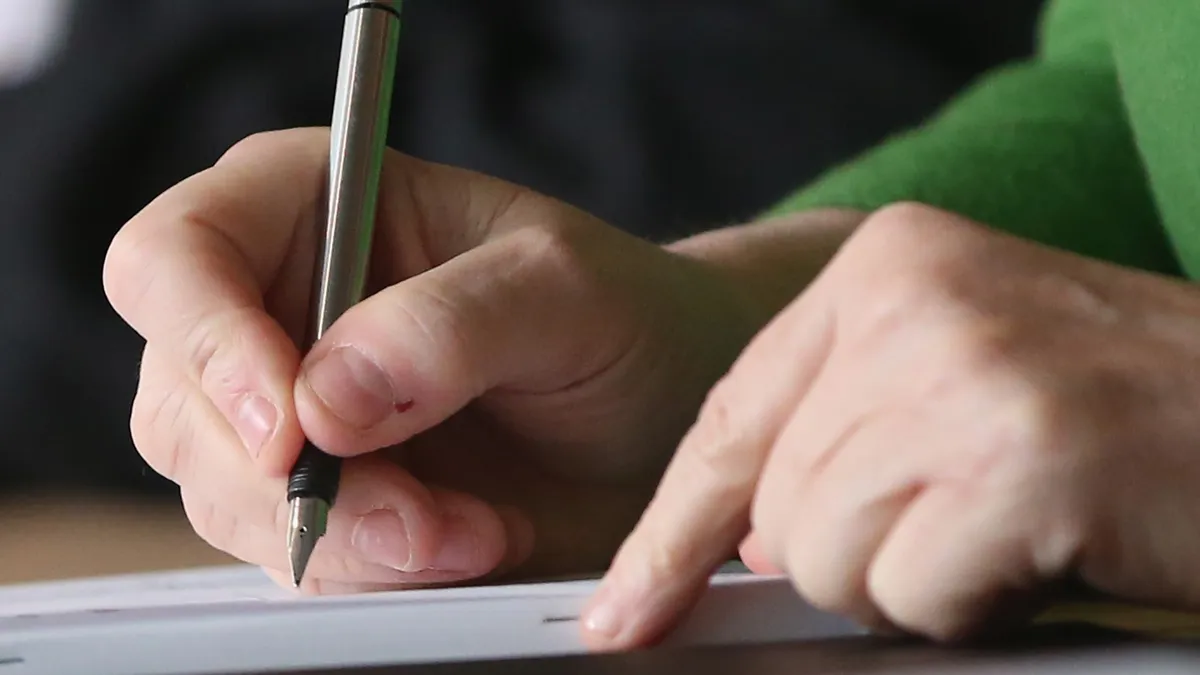Dive Brief:
- With the advent of computer technology, penmanship and handwriting may feel obsolete. But the physical act of moving a pen or pencil to capture thoughts doesn’t just ink ideas down on paper — it may also help ink ideas into our memory while boosting other abilities.
- Cursive writing, when taught, tends to be a part of elementary school curricula, but educators find taking notes by hand useful as students continue through their education. Alfredo Celedón Luján, an English teacher at Monte del Sol Charter School in Santa Fe, New Mexico and former president of the National Council of Teachers of English, encourages his middle school students to handwrite and remembers doing so himself in college.
- “I think that taking notes and writing leads to better understanding,” Luján said. “In short, it's mental notes on paper.”
Dive Insight:
Taking notes by hand is a slower practice than tapping across a computer keyboard, but some experts say taking notes by hand allows more space to process thoughts, creates better-organized materials and strengthens fine motor skills. Learning how to hold a pencil or pen requires fine-tuning the right mixture of pressure and movement to get an implement to make the letters that build words and notes.
“I think it’s important for people to handwrite,” said Luján. “It helps in processing thought, and for converting thoughts to themes from the brain right through the tip of the pencil.”
Cursive is still taught largely in elementary schools. A 2014 study published in Psychological Science showed students who took handwritten notes answered conceptual questions better than those who took them on a computer. Even doodling, whether through words or images, can help boost recall.
Penmanship or cursive lessons may enhance learning as well, as middle school English teacher Chie Sipin-Bjarenas recently wrote for Edutopia. The skill has been shown to help boost the development of literacy and writing skills on top of strengthening memory and reinforcing motor skills.
Luján remembers writing notes while in college and still takes notes by hand when traveling or on walks. He also handwrites while using digital tools, picking up a stylus to jot down thoughts on his iPad.
He said two of his ELA students recently asked if they could write on paper instead of a computer, a practice he supports. Additionally, Luján encourages handwriting in class by giving students time to free-write for a minute or so during the day. The result may not be a polished essay, but he believes it opens the doors to ideas for later assignments.
“It lays down a stream of consciousness, a theme from which you develop your idea,” Luján said. “It encourages creativity.”









